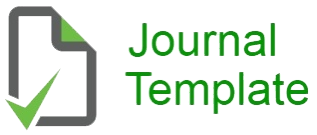ANALISIS KESALAHAN SISWA DALAM MENYELESAIKAN SOAL SPLDV BERDASARKAN TEORI NEWMAN DI KELAS VIII
Keywords:
Error Analysis, Solving Problems, and Two Variable Linear Equation SystemAbstract
A system of two-variable linear equations (SPLDV) is a system or entity of several similar two-variable linear equations. This study aims to determine student errors in completing the Newman Theory Two-variable Linear Equation System material. The method used is a descriptive method with a qualitative approach. Of the 5 questions given, 2 numbers were answered correctly, namely number 2 and number 5. In this study, 5 respondents were selected who made mistakes in solving the two-variable system of equations to be interviewed about the questions that had been given. Of the five types of student errors according to Newman's Theory in solving system problems of linear equations, two errors that often occur are errors in writing the final answer with a percentage of 49%, then process skill errors with a percentage of 47%, errors in understanding questions with a percentage of 32%, reading error with a percentage of 13% and the last transformation error with a percentage of 10%.
References
Abdurahman, Mulyono. (2012). Anak berkesulitan. Jakarta: Rineke Cipta
Aminudin. (2010). Strategi Meningkatkan Hasil Belajar Siswa dalam Pembelajaran Tipe STAD: UNESA
Cahirati, P. E. P., Makur, A. P., & Fedi, S. (2020). Analisis Kesulitan Belajar Siswa dalam Pembelajaran Matematika yang Menggunakan Pendekatan PMRI. Mosharafa: Jurnal Pendidikan Matematika, 9(2), 227-238.
Domu, I., & Mangelep, N. O. (2019, November). Developing of Mathematical Learning Devices Based on the Local Wisdom of the Bolaang Mongondow for Elementary School. In Journal of Physics: Conference Series (Vol. 1387, No. 1, p. 012135). IOP Publishing.
Domu, I., & Mangelep, N. O. (2020, November). The Development of Students’ Learning Material on Arithmatic Sequence Using PMRI Approach. In International Joint Conference on Science and Engineering (IJCSE 2020) (pp. 426-432). Atlantis Press.
Manambing, R., Domu, I., & Mangelep, N. O. (2018). Penerapan Pendekatan Pendidikan Matematika Realistik Indonesia Terhadap Hasil Belajar Siswa Materi Bentuk Aljabar (Penelitian di Kelas VIII D SMP N 1 Tondano). JSME (Jurnal Sains, Matematika & Edukasi), 5(2), 163-166.
Mangelep, N. (2013). Pengembangan Soal Matematika Pada Kompetensi Proses Koneksi dan Refleksi PISA. Jurnal Edukasi Matematika, 4.
Mangelep, N. O. (2015). Pengembangan Soal Pemecahan Masalah Dengan Strategi Finding a Pattern. Konferensi Nasional Pendidikan Matematika-VI, (KNPM6, Prosiding), 104-112.
Mangelep, N. O. (2017). Pengembangan Perangkat Pembelajaran Matematika Pada Pokok Bahasan Lingkaran Menggunakan Pendekatan PMRI Dan Aplikasi GEOGEBRA. Mosharafa: Jurnal Pendidikan Matematika, 6(2), 193-200.
Mangelep, N. O. (2017). Pengembangan Website Pembelajaran Matematika Realistik Untuk Siswa Sekolah Menengah Pertama. Mosharafa: Jurnal Pendidikan Matematika, 6(3), 431-440.
Mangelep, N., Sulistyaningsih, M., & Sambuaga, T. (2020). PERANCANGAN PEMBELAJARAN TRIGONOMETRI MENGGUNAKAN PENDEKATAN PENDIDIKAN MATEMATIKA REALISTIK INDONESIA. JSME (Jurnal Sains, Matematika & Edukasi), 8(2), 127-132.
Sulistyaningsih, M., & Mangelep, N. O. (2019). PEMBELAJARAN ARIAS DENGAN SETTING KOOPERATIF DALAM PEMBELAJARAN GEOMETRI ANALITIKA BIDANG. Jurnal Pendidikan Matematika (JUPITEK), 2(2), 51-54.
Tiwow, D., Wongkar, V., Mangelep, N. O., & Lomban, E. A. (2022). Pengaruh Media Pembelajaran Animasi Powtoon Terhadap Hasil Belajar Ditinjau dari Minat Belajar Peserta Didik. Journal Focus Action of Research Mathematic (Factor M), 4(2), 107-122.
Widodo, S. A., & Sujadi, A. (2017). ANALISIS KESALAHAN MAHASISWA DALAM MEMECAHKAN MASALAH TRIGONOMETRI. SOSIOHUMANIORA: Jurnal Ilmiah Ilmu Sosial Dan Humaniora, 1(1). https://doi.org/10.30738/sosio.v1i1.518
Wijaya, A. A. (2013). Analisis kesalahan siswa dalam menyelesaikan soal cerita materi sistem persamaan linear dua variabel. Mathedunesa, 2(1).
Downloads
Published
Issue
Section
License
Copyright (c) 2022 ADIBA : JOURNAL OF EDUCATION

This work is licensed under a Creative Commons Attribution 4.0 International License.









